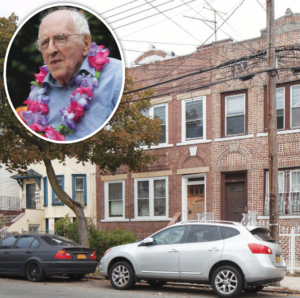Interactive map reveals lesser-known landmarks in Queens’ LGBTQ rights movement June 29, 2020
June 29, 2020
By: David Brand

That modest brick home on 115th Street in Richmond Hill? Easy to miss, but it’s an iconic location in LGBTQ New Yorkers’ long struggle for equity.
So is a stretch of Myrtle Avenue in Ridgewood, a Jackson Heights street corner and even the New York State Pavilion in Flushing Meadows Corona Park.
All four sites are included in a citywide initiative known as the NYC LGBT Historic Sites Project, which highlights the pivotal role that lesser known locations played in the ongoing movement for LGBTQ rights. The project, which features an interactive map, documents 270 historic landmarks, including 16 so far in Queens.
“All of this history is largely unknown to the general public and we want to educate the LGBT community and youth about this history and make it visible,” said Project Manager Amanda Davis, an Astoria resident. “It goes well beyond the obvious neighborhoods of Greenwich Village and places in Manhattan, which tend to get a lot of attention.”
“Queens has a really great history, too,” she added.
Take that unassuming, semi-detached house in Richmond Hill. It was the childhood home of pioneering activist Frank Kameny, who became a leading strategist for the LGBT rights movement after he was fired by the federal government because he was gay. Kameny was later honored by President Barack Obama at the White House.
Myrtle Avenue was the scene of an important 1993 rally known as the March for Truth, organized by the Anti-Violence Project and Queens Gays and Lesbians United. The demonstrators came together to respond to backlash to a public school curriculum that included information about families with LGBT parents. The “Children of the Rainbow” curriculum riled homophobic parents and school officials and set off controversy across the city, starting in Queens’ School District 24.
At the intersection of 78th Street and 37th Avenue in Jackson Heights, a street sign designates Julio Rivera Corner to honor the 29-year-old gay bartender who was tortured and murdered by three men near the location in 1990.
The early 1990s march and murder, Davis said, “made people in Queens realize we have to become more visible, we are your friends, your family. We’re not just in Manhattan.”
The famous New York State Pavilion is included in the project because of its association with Architect Philip Johnson and artists Robert Indiana, Ellsworth Kelly, Robert Rauschenberg and Andy Warhol, all of whom identified as gay or bisexual.
Other locations include St. Andrew’s Episcopal Church in Astoria, which served as the mid-90s meeting place for the Queens chapter of SAGE, an organization for older LGBTQ adults.
“It’s important to highlight the role of churches in a positive way,” Davis said “There are progressive, welcoming and inclusive places.”
The Jackson Heights starting point of the first Queens Pride Parade, founded in 1993, is on the NYC LGBT Rights Project map. So is the Austin Street home of Kitty Genovese, whose death fueled sensationalized and false reporting that contributed to a perception of apathetic New Yorkers. Genovese lived in the home with her girlfriend.
Councilmember Daniel Dromm, a Queens Pride Parade co-founder, said the march has draw more attention to the LGBTQ rights movement over the past 27 years. This year’s event was cancelled because of COVID-19, but organizers Zachariah Boyer and Mo George ensured events took place virtually to mark Pride month.
“Pride marches bring visibility to our community, and that has always been key to the success of the wider LGBTQ rights movement,” Dromm said. “By celebrating Queens Pride virtually on June 7th, we continued to be visible and celebrate who we are — and did so in a safe and responsible manner. It took a lot of creativity and looked very different from past pride events, but it was a major success.”
Nine other Queens locations are also included in the NYC LGBT Historic Sites project. To learn more, or to recommend additional sites, visit nyclgbtsites.org.
“We hope that our website inspires the LGBT community and youth, who are often not taught this history, in particular,” the creators, led by Executive Director Ken Lustbader, write on the website. “Now more than ever it is important to raise public awareness about the community’s contributions to American history as well as the struggles it has faced in achieving acceptance and equality under the law.”